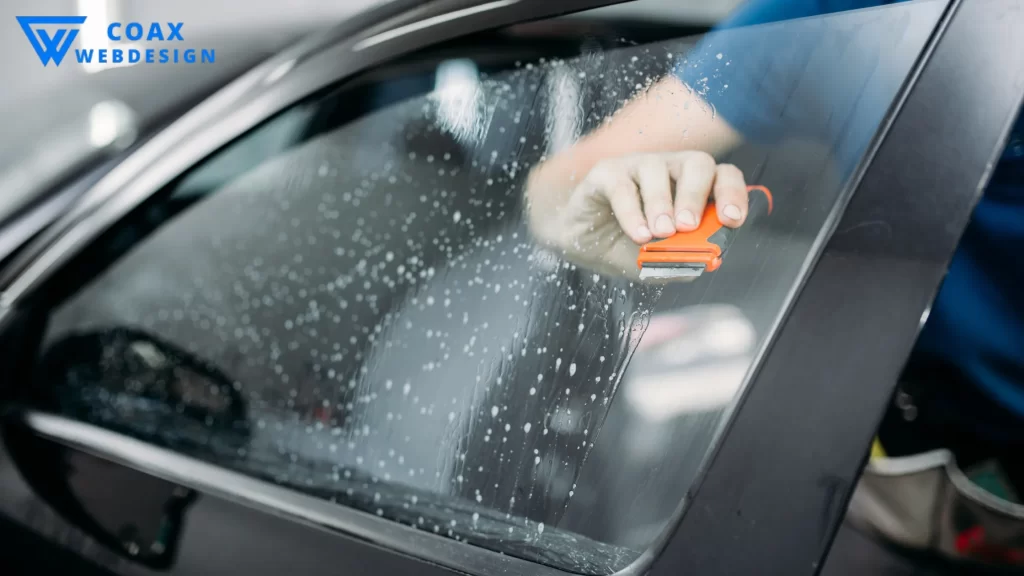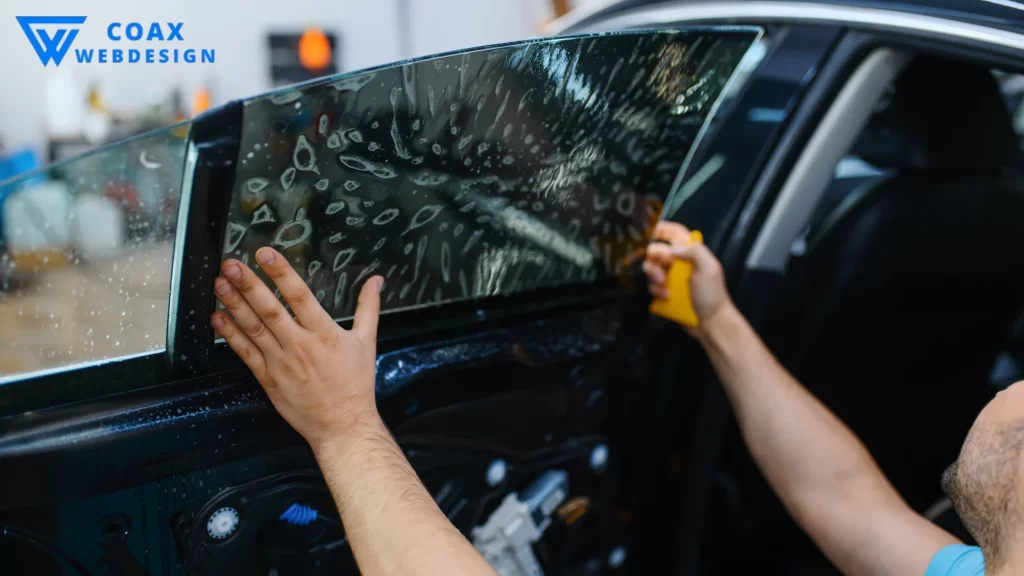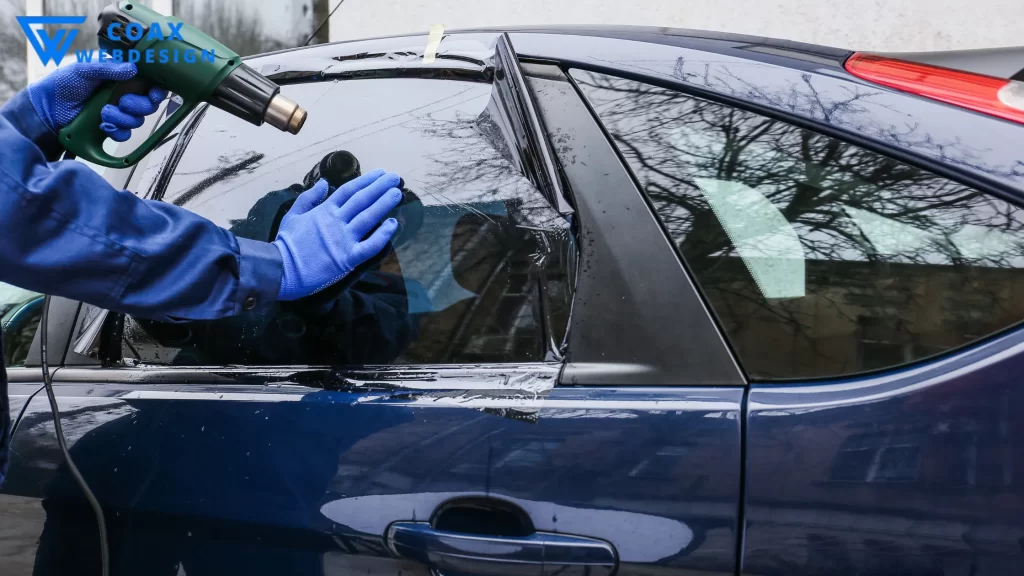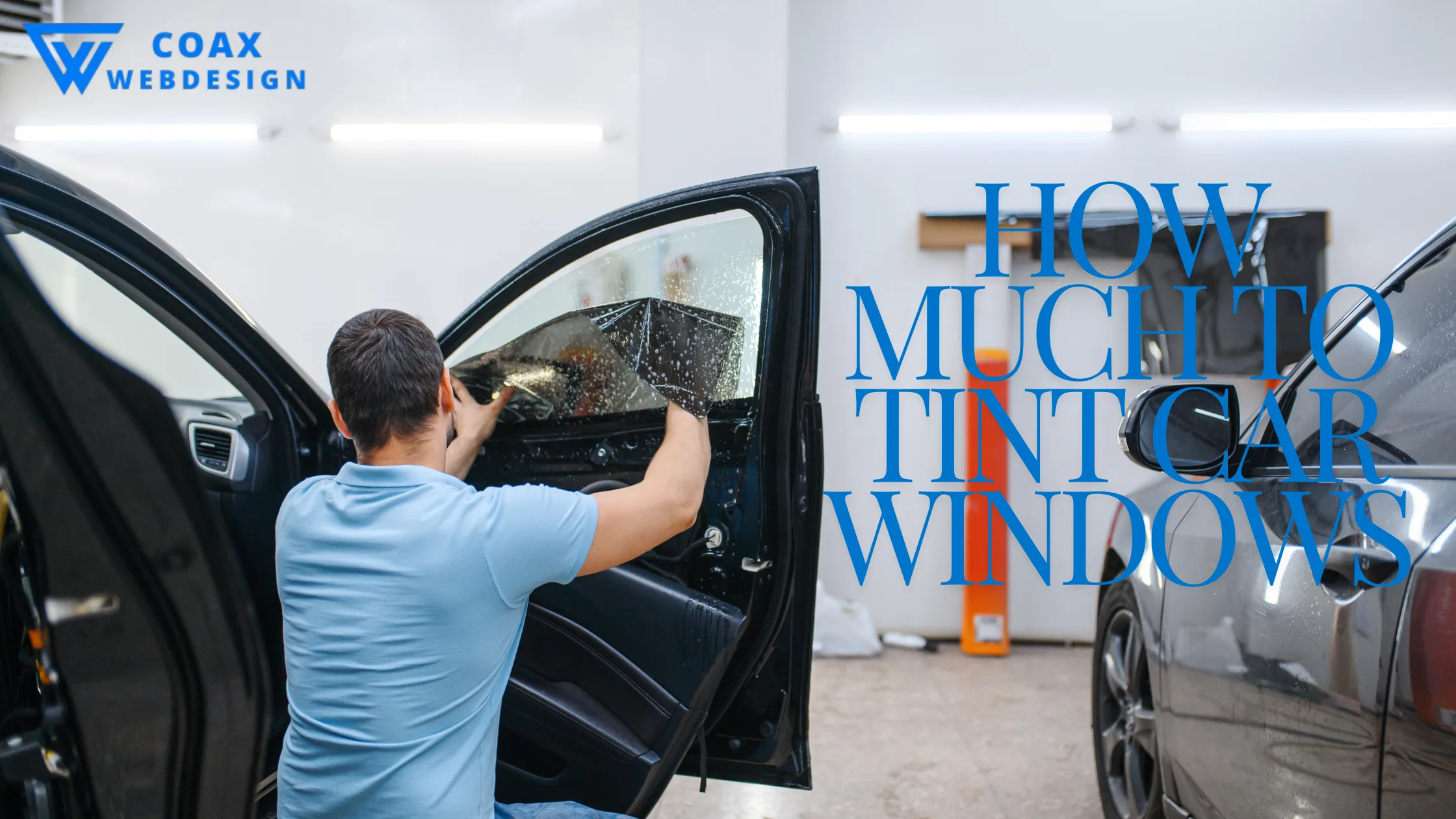Table of Contents
Car window tinting is a great way to improve privacy, protect your car’s interior, and keep cool during hot days. However, when it comes to how much to tint car windows, many people wonder about the actual cost and whether it’s worth the investment. In this article, we’ll break down everything you need to know about car window tinting prices, the factors influencing them, and how to get the best value for your money.
What Is Car Window Tinting?

Before discussing costs, it’s essential to understand car window tinting. Window tinting is a process where a thin film is applied to the inside or outside of car windows. This film helps block UV rays, reduce glare, and enhance privacy. But just how much to tint car windows depends on several factors, which we’ll discuss further.
Why Do People Tint Their Car Windows?
People choose to tint their car windows for many reasons. Some want more privacy, while others want to protect their car’s interior from fading. Tinting can also reduce heat inside the vehicle, making it more comfortable during the summer. And, of course, a good tint can add a sleek, stylish look to any vehicle. Understanding the benefits can help you see why many car owners find it worth the cost.
Also Read: How Tall is Christian Bale? Discover the Fascinating Truth
Factors That Affect Car Window Tinting Costs

When asking, “How much do you tint car windows?” it’s essential to understand the factors influencing pricing. Here are the main elements that can affect how much you’ll pay:
1. Type of Tint Film
There are various types of window tint films, each with a different price. The common types include:
- Dyed Window Tint: This is the most affordable option and offers essential privacy and UV protection.
- Metalized Film: A bit pricier than dyed tints, this type provides better UV protection and durability.
- Ceramic Film: The most expensive option, ceramic tint provides the best UV protection, glare reduction, and heat resistance without interfering with electronic signals.
Choosing the proper tint film depends on your needs and budget. While dyed film may be cheaper, ceramic tint offers long-term benefits that might be worth the price.
2. Number of Windows
How many windows are you planning to tint? The cost increases with the number of windows you wish to tint. For example, tinting just the front two windows will be cheaper than tinting all the windows in your vehicle, including the back windshield.
3. Size and Shape of the Windows
The size and shape of your car’s windows will also impact how much you tint car windows. Larger, more curved windows are often more challenging to tint, which can increase the cost. Cars with smaller or flat windows may cost less to tint.
4. Professional Installation vs. DIY
Hiring a professional for car window tinting is typically more expensive than doing it yourself, but it ensures better results. Professional installers have the tools and experience to apply the tint without bubbles or wrinkles. DIY tint kits are cheaper, but if misused, you may spend more to fix the job later.
5. Location
Where you live can also impact the cost of window tinting. In urban areas, where there’s more demand, prices might be higher compared to rural areas. Additionally, states have different laws regarding how dark you can tint your windows, which may affect your choices and prices.
Also Read: Painting Stage Floor: Master the Fake Shag Carpet Technique
Average Costs of Car Window Tinting

So, how much is the average cost of tinting car windows? Let’s break it down:
- Basic Tint (Dyed Film): $50 to $150 for a whole car.
- Mid-Range Tint (Metalized or Hybrid Film): $200 to $400 for an entire car.
- Premium Tint (Ceramic Film): $400 to $800 for an entire car.
If you’re tinting two front windows, expect to pay between $50 and $150, depending on the film type. Remember, these are general estimates, and prices can vary based on the factors mentioned earlier.
DIY Window Tinting: Is It Worth It?

You might consider DIY window tinting if you’re on a tight budget. Tinting kits for DIY projects can cost as little as $20 to $50. However, DIY tinting requires patience and precision. You’ll have bubbles, wrinkles, or uneven coverage if the tint isn’t applied correctly. In some cases, fixing a bad DIY job can cost more than hiring a professional in the first place.
How to Choose a Professional Tinting Service
If you’ve decided to hire a professional for your car window tinting, choosing the right one is crucial. Here’s how to ensure you get the best value:
1. Check Reviews
Look up reviews for local tinting shops to see what past customers have to say. A good shop will have positive reviews and customer testimonials.
2. Ask About Warranties
A reputable tinting service will offer a warranty for its work. This warranty ensures that if the tint goes wrong, like bubbling or peeling, you can get it fixed at no extra cost.
3. Compare Quotes
Don’t settle for the first quote you get. Look around and contrast the costs offered by various experts. This way, you can ensure you’re paying a fair price for quality work.
4. Look at Samples
Ask the tinting shop for samples of its work. Seeing the results firsthand can give you a better idea of the shop’s skill level.
Legal Considerations for Car Window Tinting
Before getting your windows tinted, it’s essential to understand your local laws regarding car window tinting. Some states have strict regulations about how dark your tint can be, especially for front windows. If your tint is too dark, you could face fines and may even be required to remove it.
Most professional tint shops know local tinting laws and can help ensure your tint is legal. However, if you’re doing it yourself, research the tinting laws in your state or area before starting.
Also Read: Car Window Tinting: How Much Should You Really Pay?
How to Maintain Your Tinted Windows
Once you’ve tinted your windows, proper maintenance is critical to keeping them in good shape. Here’s how to take care of your car’s tinted windows:
- Wait Before Cleaning: After tinting, wait a few days before cleaning the windows to allow the film to adhere fully.
- Use the Right Cleaner: Avoid ammonia-based cleaners, which can damage the tint. Instead, use a mild, non-abrasive cleaner and a soft cloth.
- Be Gentle: Don’t use rough cloths or scrub too hard, as this can cause the tint to peel or scratch over time.
With proper care, your window tint can last for years, providing protection and privacy for your




